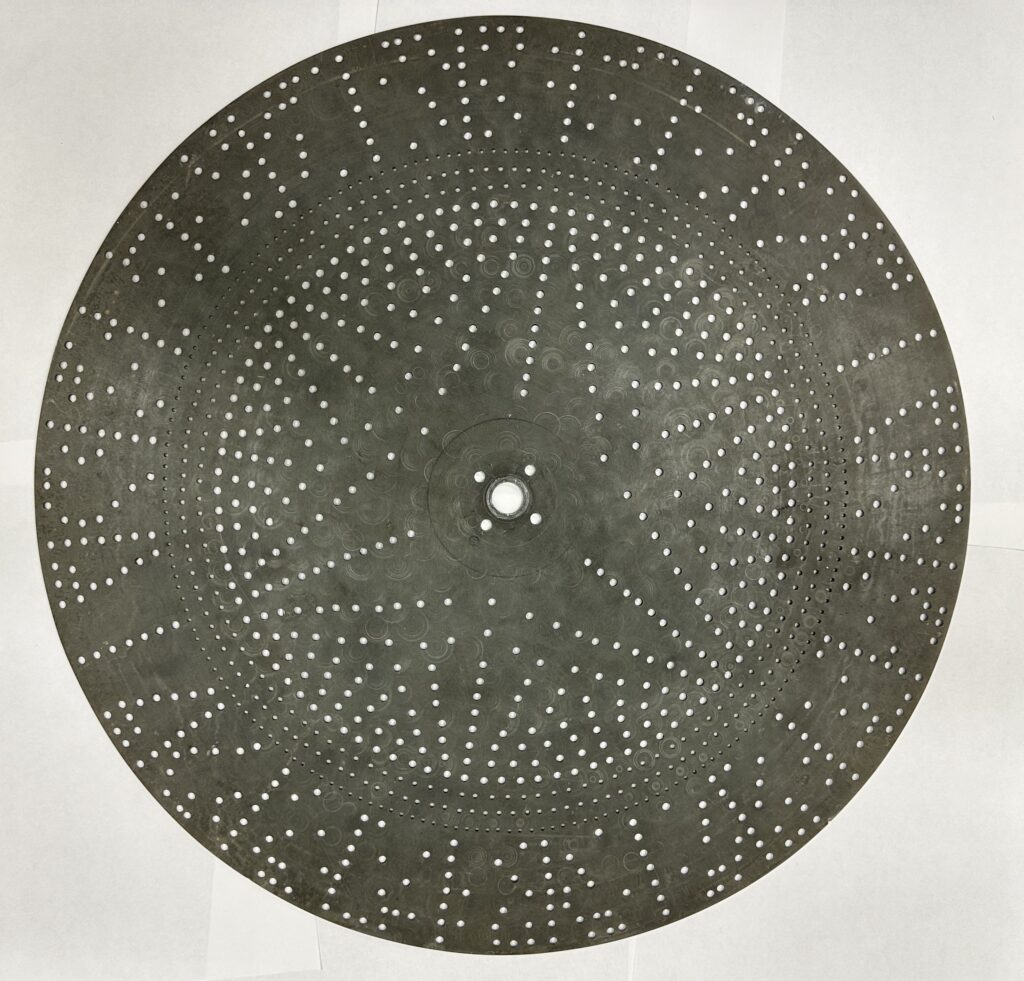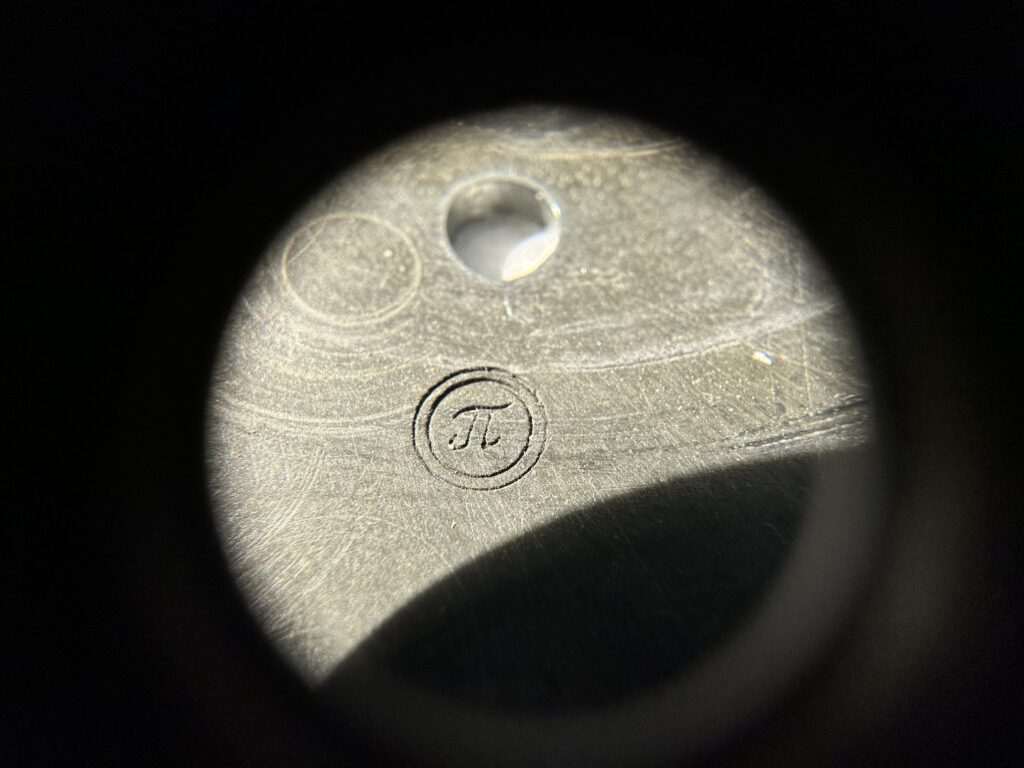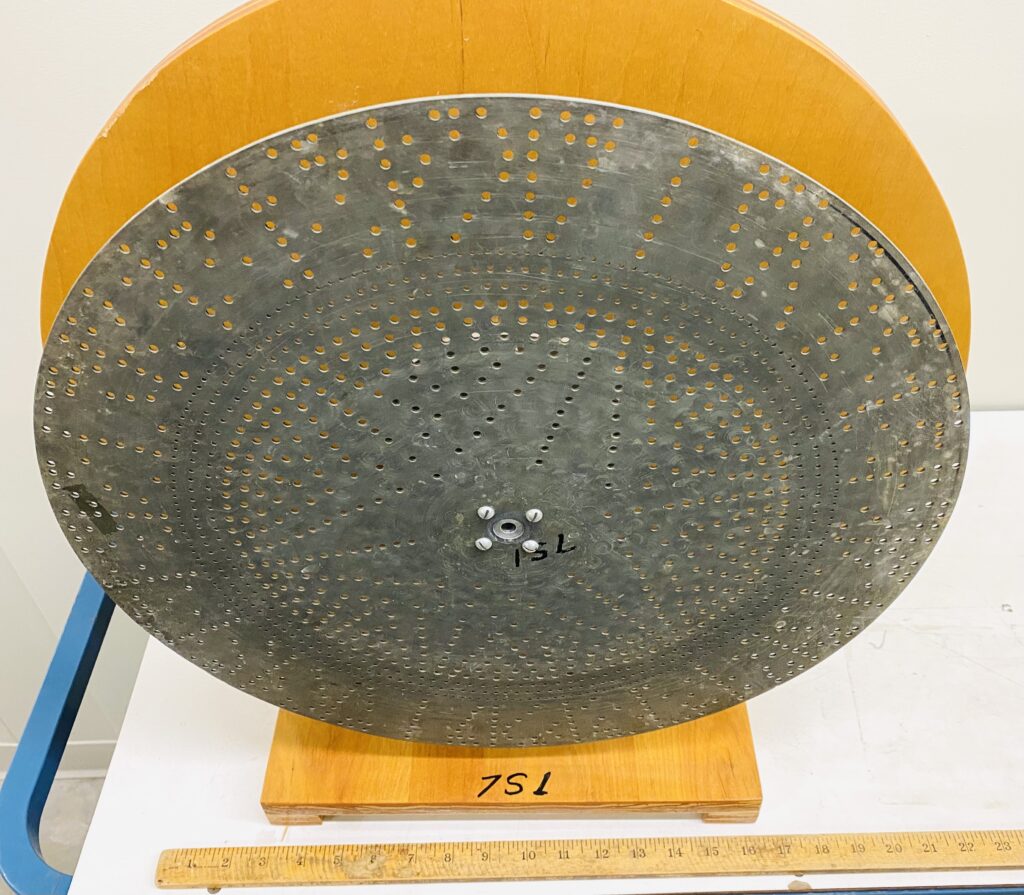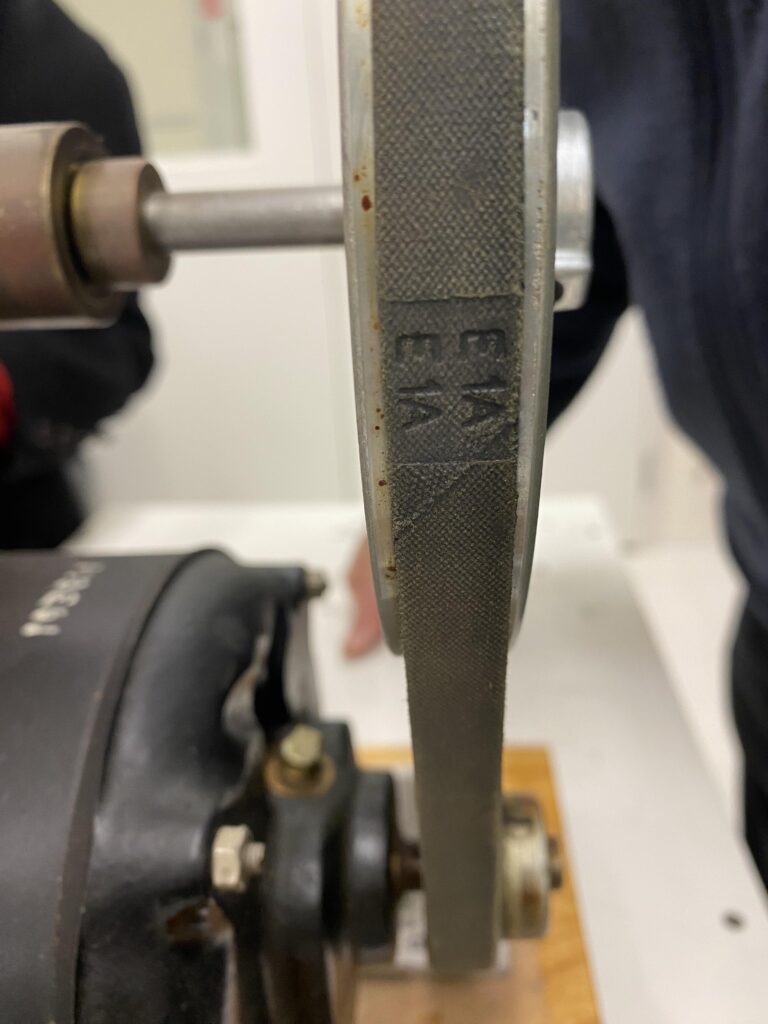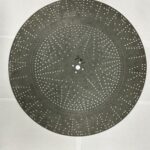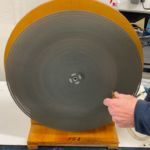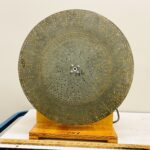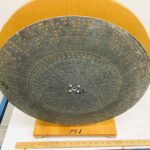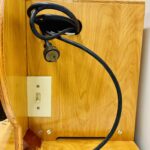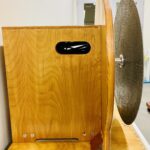Artefacts
Opelt’s Siren Disk
Opelt’s Siren Disk
On the bottom of the wooden base and metal turntable are written "7S1" in marker.
Near the center of the disk there is the Greek letter "Pi"(π).
Description
The earliest siren is attributed to Charles Cagniard de la Tour in 1819 (See the entry for Cagniard de la Tour Siren) Polyphonic sirens, with concentric rings of perforations, were developed by August Seebeck, Friedrich Wilhelm Opelt, Heinrich Wilhelm Dove and Hermann von Helmholtz; these normally produced a major triad.
Opelt first described this siren in 1852. It had a series of 24 holes that demonstrated a number of acoustical effects. The first fifteen holes produced simple tones, and the next five series of holes produced different intervals from the scale, while the remaining holes provided various musical chords and harmonies. Rudolph Koenig was the first instrument maker to produce these sirens for the market, the first being made of cardboard discs.
Helmholtz was the first to design a double siren for research purposes and it was subsequently produced by the Berlin mechanic E. Sauwerwald and later by Rudolph Koenig for sale, largely for acoustic demonstration purposes, demonstrating musical intervals, the relation of pitch to frequency, and autocorrelation in psycho-acoustics. It was the first instrument to give absolutely precise ratios of frequency and remained the only really precise one until the advent of digital synthesis.
This siren system consists of a wooden rectangular chamber and a rotating perforated disk supported on a wooden base. The rectangular chamber and the perforated disk are connected to one another at their centres by a steel rod. The wooden chamber of the siren disc consists of a mid-20th century motor, pulleys and belt.
A 22 cm diameter metal disk has a number of concentric rows of regularly spaced holes. When rotated (by the air itself, by hand, or by a motor) at a uniform speed while blowing air at a row of holes, a musical note is produced by the sequence of regular puffs of air issuing from successive holes. The frequency is determined by the speed of rotation and the known number of holes
The Harmonic Portion of the Siren Disk
Most siren disks include multiple concentric circles of spaced holes, so that an air-jet can be directed at different radii to get different effects. For example, the outermost eight circles of holes include uniformly spaced holes, in which the number of holes increases along a harmonic series, so that the eight notes of a musical scale can be played by directing an air jet sequentially at each circle. Although the pitches emitted by all rows rise with increase in speed of rotation, the musical intervals between them remain unchanged.
Setting it Up
A plastic 10 mL pipette attached to a length of Tygon tubing and a large nitrogen cylinder with regulator serves well for a source of air. You can also use your mouth as a source of air if the nitrogen cylinder is not handy. Two pipettes can be used at the same time with the Y-connector. The spacing of rows on the Opelt disk was made so as to also be compatible with this nozzle.
Dimensions
Diameter: 22 cm; Base width: 15 cm
Condition
Fair condition, slight crack in the back box, still works when connected to the circuit. Some minor tarnishing.
© 2015 – 2025 Humboldt-Universität zu Berlin


